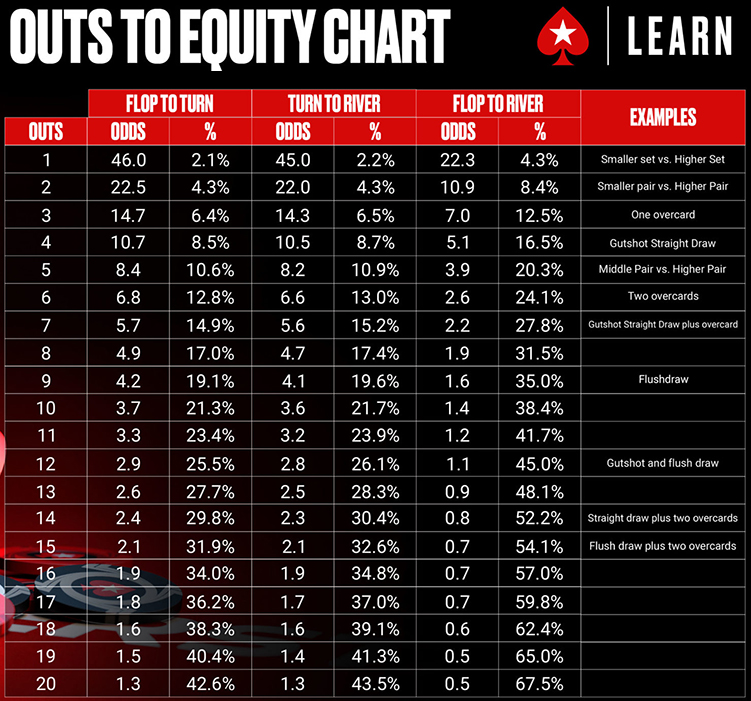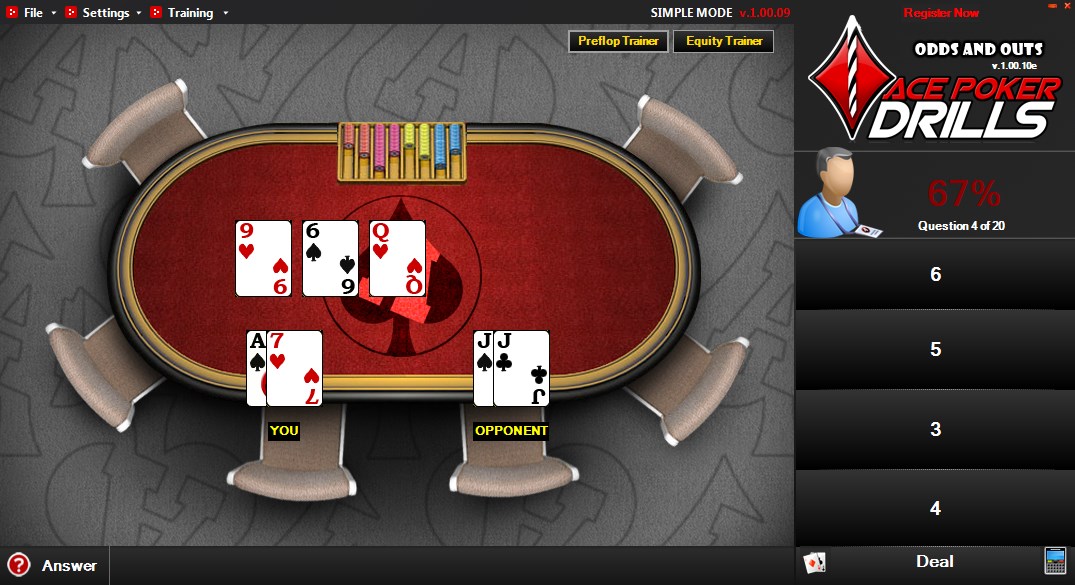How to count outs in poker?

Maths is an important but not the most interesting part of poker. However, success in today's environment cannot be achieved without it. Players start by learning about outs and how to count them. Let's discuss it in detail.
What are outs?
Under "outs" in poker are the cards that give you the strongest combination on the showdown. Usually, outs are counted from flop to turn or river. Information about the chances of getting stronger allows you to make an adequate hand plan.
To calculate the number of outs, consider your hand and understand which cards can improve it. Here are some examples:
1. Preflop, you got J10 and tried to steal the blinds from the BTN. You raised and your opponent comes in from the BB. The common cards on the board were Q92. Eight cards boost you to a straight. The best combination will bring 4 kings and 4 eights.
2. Preflop you were dealt a heart A5. You made a raise with CO and received a call from your opponent on BTN. On the flop, the dealer laid down Q48. The last two cards are also hearts. In this case you need hearts 2, 3, 6, 7, 9, 10, J, Q, K. That's a total of 9 outs.
3. Your starting hand is 88. You made a raise and two opponents called it. The flop K92 doesn't hold much promise. The remaining two eights will give you a good chance to win.

Two outs is a good argument for switching to a passive plan
When counting outs, remember that sometimes the same card improves the combinations of several players at the same time. If a turn card closed your flush but gave your opponent a full house, you can't count it as an out. That is why poker has introduced the concept of "discounted outs". It means a card that strengthens our combination, but gives the opponent a better hand. Here's how it looks in practice:
On preflop, you were dealt A9 spades. Your opponent got a 77. On the flop you were dealt 72Q. The queen and seven were our suit. On the turn, the spade deuce comes in. As a result, we have a flush of spades, but our opponent already has a full house. On the flop, we should consider that the deuce will not be a clean out and it is wrong to assume that we have 8 cards to win.
How to quickly calculate the odds to get best hand?
Experienced players don't count outs. Paradoxically, but easily explained: many situations are repeated from time to time at the tables, so the process is automated. As a result, a poker player sees a two-way straight draw and immediately realises that he has 8 outs or 16% chance of getting a straight on the turn. How is this 16% calculated? Let's explain.
On the flop, the player knows 2 of his own cards and 3 common cards. There are 52 cards in the deck. Subtract the five known denominations and we get 47 remaining cards. Then we take 1 out and divide it by 47. The result is a value of 2.12%. It denotes the chance of getting the right card in a situation where we had 1 out. The straight draw to the best combination is strengthened by 8 denominations, so multiply 2.12% by 8. The result is 16.96%. To speed up your calculations, round the 2.12% to 2%.
You don't need to calculate poker outs using the formula every time. Instead, remember: multiply the number of outs by 2 to find out what the odds are of getting the right combination on 1 street. Turn is not the last street to get the right card. If you want to know the chances of getting a boost from the flop to the river, multiply the value of 4.2% by the number of outs. In the case of a straight draw, the odds of two streets are 33.6%. The accelerated version of the calculation will give 32% for a reinforcement.

For more accurate information, see the table of outs and reinforcement probabilities
To improve your knowledge of how to count outs in poker, Roy Rounder's book "Easy Poker Maths" will help. It is freely available on the Internet.
What software will teach you how to count outs quickly?
Poker maths is not the most complicated aspect of the game. To cope with the calculations, it is enough knowledge from school. That's why software developers have avoided the topic of such software. The only exception is Ace Poker Drills. This programme teaches you to count outs and pot odds. The interface of the programme does not grab stars from the sky, but it copes with its tasks. PokerEnergy published a great review of Ace Poker Drills.

The software makes it possible to practice not only counting outs, but also pot odds
Poker calculators such as Flopzilla or Power-Equilab can indirectly help you understand outs. In the former, the section with outs is located in the "Hotness" window. Systematic work in the calculator will allow you not only to learn how to calculate outs in poker, but also to choose good situations for bluffing.
Some developers integrate the calculation of outs directly into their software. NiceHandOmaha shows the cards necessary for the best combination during the game.
We publish all useful materials and catalogue news in the PokerEnergy telegram channel. Subscribe to stay +EV.





 Log in
Log in  Register
Register 